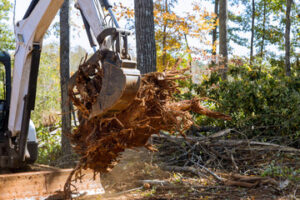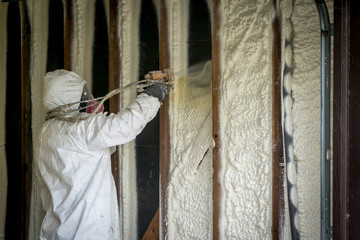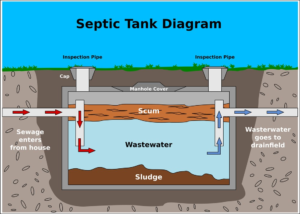Dog Training Chico CA is a great way to bond with your dog. It can also help to increase their mental stimulation and improve their confidence in different environments.

Begin by teaching your dog basic obedience commands in familiar surroundings. Gradually introduce distractions, and then practice in a public location like the park or beach.
Dog training is moving away from the old-fashioned methods of coercion that use punishment to train animals. Many reputable training associations only teach positive reinforcement techniques. Positive reinforcement involves adding something your dog likes after a desirable behaviour has been performed. A food reward is the most popular, but toys, verbal praise and play can also be used. A clicker is a great tool to help you identify the exact moment that your dog has achieved what you are asking them to do. It marks the behavior that earned the reward and makes sure they understand that what they did was right.
Rewarding a desired behaviour means the dog will want to repeat it again. This can be done with verbal praise or a treat but it is important to remember that not all dogs are food motivated. For those that are not, other rewards can be used such as a walk or playtime with a favorite toy. It is important to find the reward that your dog will respond to most, and then offer it every time they perform the behaviour. Some dogs learn very quickly, while others take longer to understand what they have done to earn their reward.
The flip side of positive reinforcement is negative reinforcement which means removing something your dog does not like after an undesired behaviour has been performed. A good example would be removing attention from your dog if they are jumping up to greet people, or putting pressure on the leash if they pull on the lead. Negative punishment is a powerful tool that can be used in the correct way to help your dog learn.
Unfortunately, some trainers have taken negative reinforcement to an extreme level and started to punish their clients for not offering the right behaviors, even when this leads to aggression or fear-based responses. Some trainers have even gone so far as to attack anyone who disagrees with their approach or offers alternatives, and as a result, many new dog owners are afraid to offer any behaviour at all because they believe that doing so will be punished and lead to an aversive outcome.
Negative Reinforcement
The use of negative reinforcement in dog training is a controversial subject. Many animal rights activists call it abuse and a form of animal cruelty, but in the hands of an experienced trainer, it can be a quick and effective way to train your pet. The key to using negative reinforcement properly is to make sure your dog understands what is being punished, and why.
To do this, you need to use a specific signal, or cue, that your dog knows and responds to immediately. This could be a clicker, a collar pop, a verbal cue such as “No”, or even a trained behavior, such as “watch me.” The key is that it must be clear and immediate, so your dog does not have time to guess what is being punished.
When your dog receives the correct signal, it immediately recognizes that the undesired behavior is being punished and will stop doing it. If your dog continues to do the undesired behavior, you must repeat the correct signal and immediately punish it. Eventually your dog will learn that the only way to escape punishment is to perform the desired behavior.
There are two types of negative reinforcement: adding an aversive (positive punishment), and taking away an aversive (negative punishment). Both work well, but there is a risk that you can go overboard with either one and make your dog too stressed out.
An example of positive punishment is a trainer yelling at a dog for jumping up or pulling on the leash. When the dog stops jumping up or pulling on the leash, the trainer gives it a clicker or verbal praise, and the dog knows that doing the right thing gets the reward, while doing the wrong thing earns the punishment.
Negative reinforcement, on the other hand, is a type of classical conditioning. For example, if your dog is afraid of another dog, you can teach it to ignore the other dog through counter-conditioning or desensitization. In both cases, your dog will get food (or a great reward like a game of tug), but with counter-conditioning they have to work for it by going to a safe distance and interacting with the other dog, while with desensitization the food happens as a side effect of doing something else your dog enjoys.
Time Outs
Time outs are a popular and effective way to discipline dogs. They are used to remove a dog from the situation or play area that is causing them frustration and help teach them that their misbehaviors will result in a loss of privileges. This is a form of negative reinforcement and will only work if it is used consistently. Using it too infrequently will cause your dog to lose interest and not make the connection between their actions and the consequences.
The first step in successfully implementing time outs is to determine what behavior you are trying to correct. You will need to observe your dog and find out what triggers the unwanted behavior, for example nipping during dog-dog play or barking at people to demand attention. Once you know what causes the unwanted behavior, decide on a warning cue that will be delivered before the behavior occurs. For example, a calm vocal warning like “no” or “that’s enough”. Once you have the warning cue down, practice it during play sessions and at home to get your dog to respond to it before their behavior becomes disruptive.
When the time out is in effect, take your dog away from whatever situation they are in, whether it be their crate, behind a gate or even just walking them to another room that is safe and hazard-free. Keep in mind that removing them from their people is considered to be a form of negative punishment for your dog, so it must only last as long as it takes for your dog to calm down and return their attention back to you. If you are not consistent with your use of time outs, it will be very difficult for your dog to connect their behavior with the unwanted consequence.
Remember to stay calm and in control during this process, if your dog starts to avoid you when you give them the time out signal it is a good thing! This means that your training is working and they will soon realize that dodging you won’t be an effective strategy.
Rewards
The use of rewards is a critical component to dog training. Rewards are things that a dog values highly, and they make the training process enjoyable for both you and your dog. In addition, positive reinforcement helps to build a strong bond between you and your dog.
Food is one of the most common forms of rewards for dogs, and it works well as a reward initially during the process of teaching new behaviors. The key is to make sure that the treats are sized properly and that they are being disbursed in a timely manner. If a dog is waiting for a treat for too long, they will lose motivation and will not want to continue working on the behavior. It is also important to use a variety of types of food rewards, as some dogs will become bored with the same type of reward over time.
Non-food rewards are also used in dog training, and these can include verbal praise and petting, playtime, toys, and environmental rewards (like playing outside on a nice day). Using a mixture of different kinds of rewards makes training sessions more exciting for the dog and prevents the dog from becoming too dependent on food treats alone.
Another important thing to remember about the use of rewards is that once a dog is proficient at a particular behavior, it will not need as much reinforcement. In this case, the reward can be changed or lowered in value to help maintain a high level of performance. For example, if a dog is performing a “stay” for 10 seconds or more consistently, we can gradually increase the number of seconds that it needs to remain in the “stay” before the trainer provides the reward.
Some dog trainers also use a method called model-rival training, where the dog is tethered or crated while they watch other well trained dogs complete a desired task. This is a great way to train new behaviors, but it does not use any form of punishment for unwanted behavior and largely relies on a healthy relationship with the owner as the primary motivator.








